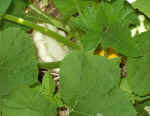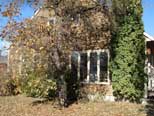|
MSc in Integrative Ecosocial Design |
 |
 |

Richard Kühnel |
|||
| |||||||||||||||||||||||||||
| <<<previous page | next page >>> | |||
|
Navigation Resources Bibliography Photos Drawings Appendix Journal Forum Presentation Resume Portfolio Help | Implementation I
Reflections Project Plan Design The project planning has been undergoing several modifications. Due to the fact that during the survey and design phases the level of detail in regards to options, materials and dependencies has not been researched in enough depths it now turns out that we are short on time and would implement something we would not feel good about and cut too many corners in our sustainable living intentions. In order to be able to bring the main focus areas, the front yard and the food growing to a near completion we have been rethinking our timing and decided to postpone tasks and sub-projects, including:
It is obvious to me now that the project plan had too many tasks packed into it. It was based on the assumption to hire help that is more experienced in the type of work and projects we are doing. As this is not the case for many of the tasks I feel to want to be present to a much greater degree than I had hoped. I also underestimated the demand of my other commitments, including the work for my IS/IT clients, preparing the outputs, family live and just taking care of my well-being.
I think the overall project plan creation was very helpful in getting a full picture of this project, doing a preliminary prioritization, deciding on the main phases, and coming up with an estimated budget. It was very helpful for the first part of the implementation. As many things are indicating that the second part of implementation does not work as originally designed, I decided to make a project plan that only contains tasks and projects we want to complete during this part. There is always the option to include more tasks from the general project plan if we should be done earlier than expected and still have more resources available.
During this part I also found myself several times going over the project plan and creating a daily work plan that helped me to communicate to Daniel and Noah and any contractors what we plan to do as well as make sure needed materials, tools and information is available. It is also a good idea to always have a few extra tasks planned, so in case there is a temporary hold up for some reason, something else can be done. Hired Help When hiring help in the future we will need to be quite clear what the agreements are, specially when it concerns family members that are living in the same household. In the believe that we can work it out once we are all together, certain things were not agreed upon and have been a little bit compromising to me, including the work hours and days of work, the occupation and level of tidiness of the shared living space, required work attire, any dietary needs and the level of skill using tools and doing the expected type of work. Output Preparation For this output the near agony of producing it has almost subsided - now it is only the experience of time crunch and the frequent switching between reporting, implementing and researching that makes it sometimes uncomfortable. I did not expect this and feel happily surprised. I cannot quite nail it down yet what made the difference. It has to do with that I am quite comfortable using the system getting it all into a certain format as designed on this web site. Another factor is that I used a mind map to structure the output - something I did the first time for the last output after having difficulties to distinguish between all the project work, including all the thinking, planning, designing and doing on one hand and preparing an output for a project phase. And of course, there is the fact that some tangible things have been implemented and I feel comfortable to report on that using text, pictures, drawings and other means. | |||
| <<<previous page | next page >>> | |||
|
Copyright © 2002 - 2011 Richard Kuhnel
|